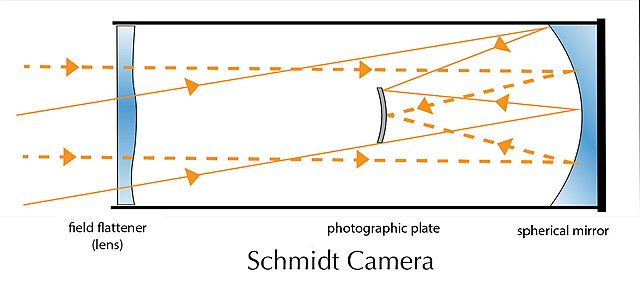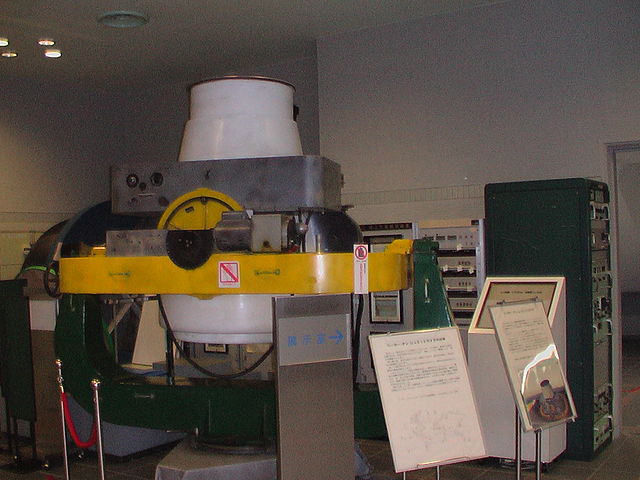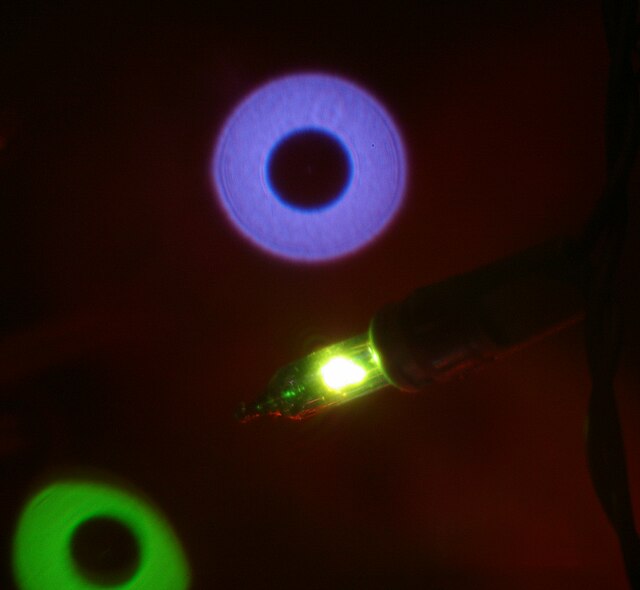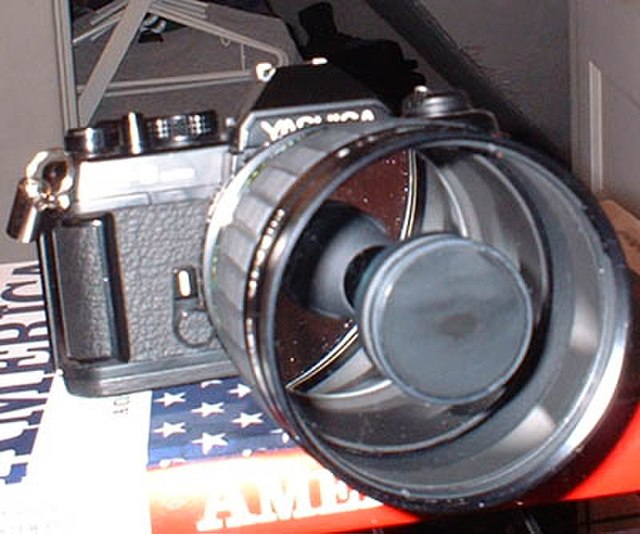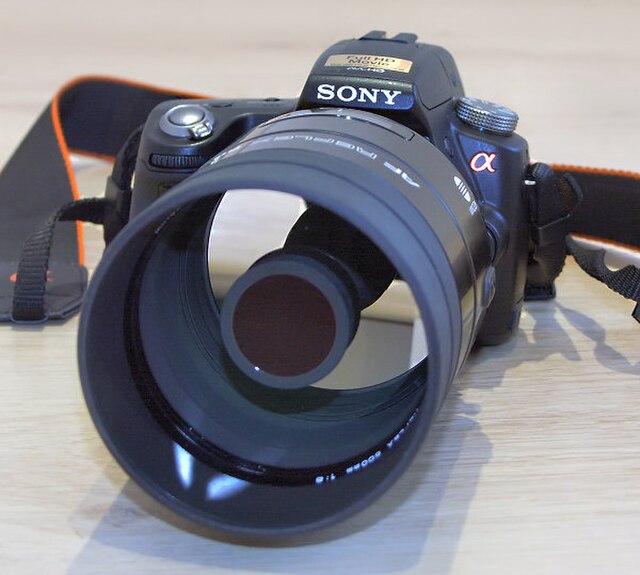A Schmidt camera, also referred to as the Schmidt telescope, is a catadioptric astrophotographic telescope designed to provide wide fields of view with limited aberrations. The design was invented by Bernhard Schmidt in 1930.
Diagram of Schmidt camera
The 77 cm Schmidt-telescope from 1966 at Brorfelde Observatory was originally equipped with photographic film, and an engineer is here showing the film-box, which was then placed behind the locker at the center of the telescope (at the telescope's prime focus)
The 2 meter diameter Alfred Jensch Telescope at the Karl Schwarzschild Observatory in Tautenburg, Thuringia, Germany is the largest Schmidt camera in the world.
One of the Baker–Nunn cameras used by the Smithsonian satellite-tracking program
A catadioptric optical system is one where refraction and reflection are combined in an optical system, usually via lenses (dioptrics) and curved mirrors (catoptrics). Catadioptric combinations are used in focusing systems such as searchlights, headlamps, early lighthouse focusing systems, optical telescopes, microscopes, and telephoto lenses. Other optical systems that use lenses and mirrors are also referred to as "catadioptric", such as surveillance catadioptric sensors.
A 150 mm aperture catadioptric Maksutov telescope
An example of 'iris blur' or bokeh produced by a catadioptric lens, behind an in-focus light
500 mm catadioptric lens mounted on a Yashica FX-3
Minolta AF 500 mm F/8 catadioptric lens mounted on a Sony Alpha 55 camera

